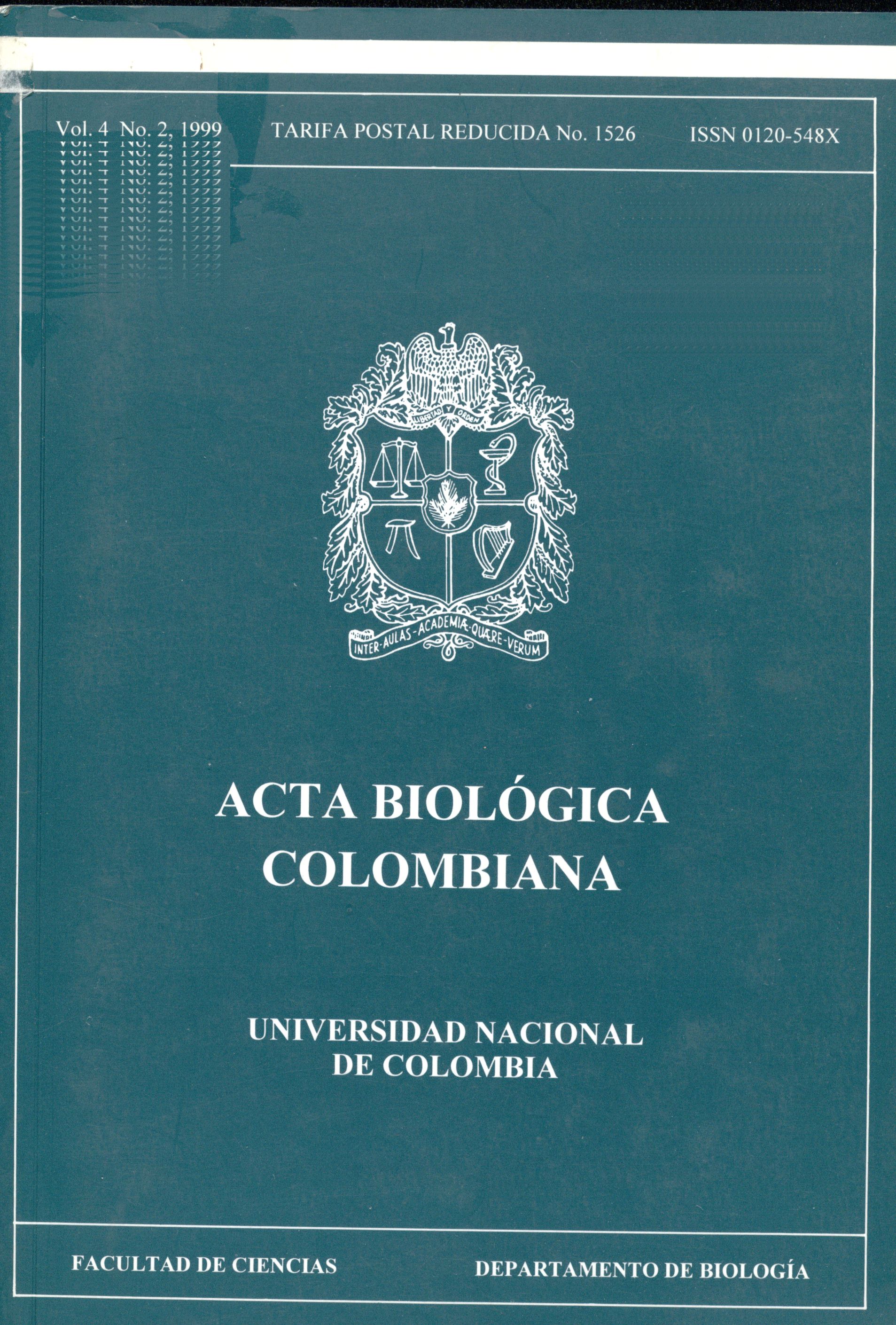Efecto del herbizida Antrazina sobre los microorganismos Diazótrofos asociados al cultivo de maíz ( Zea mays L.) en un suelo de Saldaña (Tolima)
Effect of atrazine on the diaztrophos associated with corn cultivated on soil from Saldana, Tolima
Keywords:
Trazina, Bacterias, Bagazo de Maíz, Saldaña, Colombia (es)Downloads
En un experimento de invernadero, se evaluó el efecto a través del tiempo de la aplicación del herbicida atrazina sobre la población de microorganisrnos diazótrofos asociados a raíz y suelo rizosférico de un cultivo de maíz en un suelo, Uscroper Fluvaquentic, franco-arcillo-arenoso de Saldaña (Tolima). El 61% de los aislamientos de suelo y el 83% de los de raíz presentaron crecimiento característico en forma de película blanquecina bajo la superficie del medio. La población de microorganismos diazótrofos de suelo rizosférico y la actividad de la nitrogenasa no presentaron diferencias significativas por la aplicación del herbicida. Los mayores valores en la actividad de la nitrogenasa se presentaron a los 45 días de aplicación del herbicida con la dosis más alta (3,0 Kg/ha). En las raíces de maíz, el testigo sin aplicación de atrazina presentó los valores más altos, sin embargo, tampoco en este caso se presentaron diferencias significativas entre las dosis ni a claves del tiempo. Se concluye que bajo las condiciones del experimento, hasta los 90 días, no se presentó efecto significativo de la aplicación de atrazina sobre la actividad ni sobre la población de diazotrofos presentes en la rizosfera y en la raíz de las plantas de maíz.
The effect of the herbicide atrazine on the diazotrophic microorganisms associated with rhizosphere soil and roots of a corn cultivated on a clay-loam soil in a greenhouse, Ustropet Fluvaquentic from Saldana (Tolima) was evaluated. 61% of soil isolates and 83% of root isolates presented characteristic cultural growth of whitish pellicle under the surface of the semisolid NFb-malic acid medium. The soil population of diazotrophic microorganisms and the nitrogenase activity were not significantly different between atrazine treatments. The highest values were obtained 45 days after the highest dose ofatrazine (3.0 Kg/ha). Corn roots without treatment had greater values throughout the time tested, but those were not significantly different between the treatments. As a conclusion, there were not effects on the population and the nitrogenase activity of the diazotrophic microorganisms up to 90 days after the application of atrazine.
How to Cite
APA
ACM
ACS
ABNT
Chicago
Harvard
IEEE
MLA
Turabian
Vancouver
Download Citation
Article abstract page views
Downloads
License
Copyright (c) 1999 Acta Biológica Colombiana

This work is licensed under a Creative Commons Attribution 4.0 International License.
The acceptance of manuscripts by the Journal implies its electronic edition of open Access under Creative Commons Attribution License 4.0, and the inclusion and diffusion of the complete text through the institutional repository of the Universidad Nacional de Colombia and in all the specialized data bases that the editor considers adequate for its indexation to increase Journal visibility.
Acta Biológica Colombiana allows authors to archive, download and distribute the final published version, as well as pre-print and post-print versions including a header with the bibliographic reference of published article. The journal encourages the authors to distribute the final versión through Internet, for example in their personal or institutional web pages, and scientific social networks.






















